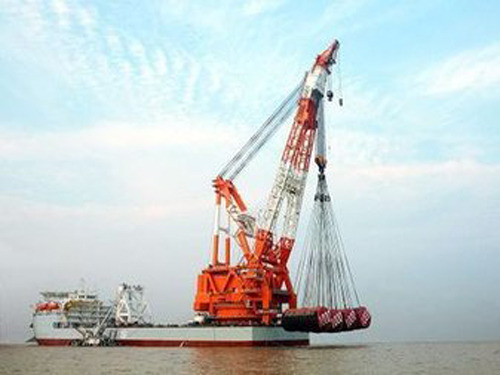On September 1st, it was learned from the Tongwei River Improvement Office of Yancheng City, Jiangsu Province that the Tongwei River Improvement Office would give certain rewards to the owner of the floating crane that was towed or demolished on schedule by September 4th. Gondolas, rewarding 3,000 yuan for less than 100 tons, 4,000 yuan for 100 tons or more (including 100 tons); floating cranes that are semi-submerged in water or on shore, remove loading and unloading facilities on their own, and clear ships ashore, less than 100 tons Reward 6,000 yuan, 100 tons (including 100 tons) reward 8,000 yuan. After acceptance check by the Tongwei River Renovation Office of the City, and the completion of floating crane cleaning is completed on schedule, the owner of the floating crane will receive a bonus with his personal identity card.
PU resin, also known as polyurethane resin, is widely used in the production of synthetic leather. Synthetic leather, also referred to as faux leather or artificial leather, is a man-made fabric that imitates the appearance and feel of genuine leather. PU resin is a key component in the manufacturing process of synthetic leather, as it provides the material with its durability, flexibility, and water resistance.
The process of producing synthetic leather involves coating a fabric substrate, such as polyester or nylon, with a layer of PU resin. This resin is typically applied in liquid form and then undergoes a curing process to solidify and bond with the fabric. The resulting material has a leather-like texture and appearance.
PU resin offers several advantages for synthetic leather production. It has excellent abrasion resistance, making the synthetic leather more durable and long-lasting. It also provides flexibility, allowing the material to be easily shaped and molded into different forms. Additionally, PU resin offers good water resistance, preventing the synthetic leather from absorbing moisture and becoming damaged.
Moreover, PU resin can be customized to achieve different finishes and textures, such as smooth, grainy, or embossed patterns, depending on the desired aesthetic. It can also be colored in various shades to mimic different types of leather. This versatility makes PU resin a popular choice for synthetic leather manufacturers.
Overall, PU resin plays a crucial role in the production of synthetic leather, providing the material with its desirable qualities of durability, flexibility, and water resistance.
Adhesive Layer Pu Reins,Dry-Process Adhesive Layer,Two Component Pu Resins,Dry-Process Pu Resin XUCHUAN CHEMICAL(SUZHOU) CO., LTD , https://www.xuchuanpu.com
According to the investigation and registration, a total of 38 floating cranes were found along the Tongyu River city section. Among them, 15 steel vessels, of which two have power; 23 cement boats, all without power, 16 semi-sinking in the water or on the shore, it is difficult to delay. The 38 floating cranes were all unlicensed ships. The loading and unloading facilities were all unqualified and the Tongliao Riverbank was used for loading and unloading. In accordance with the "Law of the People's Republic of China on Ports," "Law of the People's Republic of China on the Prevention and Control of Water Pollution," "Regulations on the Management of Safety of Inland Waterways of the People's Republic of China," and "Regulations on Water Pollution Control of the Tongyu River in Jiangsu Province," and other laws and regulations, Tongyu Riverside Floating cranes in the city section are all illegal and must be banned according to law. According to the uniform deployment requirements of the Yancheng City Party Committee and the municipal government on the Tongyu River remediation, from September 2 to September 10, the city was led by the Transport Bureau, and the municipal public security, courts and other departments participated in the project, and various departments carried out centralized special rectification.
Before September 4, all floating cranes that can be sailed must be driven away from or dragged from the Tongyu River. Floating cranes that are half-immersed in water or on the shore must be dismantled by themselves, and the floating cranes that are towed or dismantled on schedule should be suspended. The owners give certain rewards. For those floating cranes that have not been self-propelled (towed) or decommissioned since September 5, the maritime transport and port departments will be forcibly removed or dismantled, and the cost of towing or demolition will be increased. The owner shall be responsible for the lifting, and the legal liability of the owner of the floating crane will be pursued according to law.